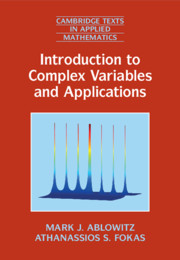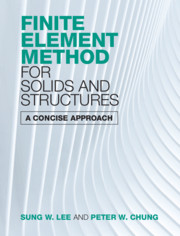Refine search
Actions for selected content:
1945 results in Engineering mathematics and programming
5 - Trusses
-
- Book:
- Introduction to Finite Elements in Engineering
- Published online:
- 08 November 2021
- Print publication:
- 21 October 2021, pp 152-182
-
- Chapter
- Export citation
7 - Axisymmetric Problems in Elasticity
-
- Book:
- Introduction to Finite Elements in Engineering
- Published online:
- 08 November 2021
- Print publication:
- 21 October 2021, pp 259-292
-
- Chapter
- Export citation
Dedication
-
- Book:
- Introduction to Finite Elements in Engineering
- Published online:
- 08 November 2021
- Print publication:
- 21 October 2021, pp v-vi
-
- Chapter
- Export citation
4 - One-Dimensional Heat Conduction
-
- Book:
- Introduction to Finite Elements in Engineering
- Published online:
- 08 November 2021
- Print publication:
- 21 October 2021, pp 118-151
-
- Chapter
- Export citation
3 - One-Dimensional Elasticity
-
- Book:
- Introduction to Finite Elements in Engineering
- Published online:
- 08 November 2021
- Print publication:
- 21 October 2021, pp 71-117
-
- Chapter
- Export citation
2 - Gaussian Elimination
-
- Book:
- Introduction to Finite Elements in Engineering
- Published online:
- 08 November 2021
- Print publication:
- 21 October 2021, pp 35-70
-
- Chapter
- Export citation

Introduction to Complex Variables and Applications
-
- Published online:
- 18 August 2021
- Print publication:
- 25 March 2021
-
- Textbook
- Export citation

Finite Element Method for Solids and Structures
- A Concise Approach
-
- Published online:
- 08 July 2021
- Print publication:
- 17 June 2021
-
- Textbook
- Export citation
Bibliography
-
- Book:
- Finite Element Method for Solids and Structures
- Published online:
- 08 July 2021
- Print publication:
- 17 June 2021, pp 344-347
-
- Chapter
- Export citation
Copyright page
-
- Book:
- Finite Element Method for Solids and Structures
- Published online:
- 08 July 2021
- Print publication:
- 17 June 2021, pp iv-iv
-
- Chapter
- Export citation
3 - Beams and Frames
-
- Book:
- Finite Element Method for Solids and Structures
- Published online:
- 08 July 2021
- Print publication:
- 17 June 2021, pp 69-110
-
- Chapter
- Export citation
6 - Virtual Displacement and Virtual Work
-
- Book:
- Finite Element Method for Solids and Structures
- Published online:
- 08 July 2021
- Print publication:
- 17 June 2021, pp 165-183
-
- Chapter
- Export citation
11 - Heat Transfer
-
- Book:
- Finite Element Method for Solids and Structures
- Published online:
- 08 July 2021
- Print publication:
- 17 June 2021, pp 283-316
-
- Chapter
- Export citation
1 - Introduction to the Finite Element Method
-
- Book:
- Finite Element Method for Solids and Structures
- Published online:
- 08 July 2021
- Print publication:
- 17 June 2021, pp 1-41
-
- Chapter
- Export citation
Appendices
-
- Book:
- Finite Element Method for Solids and Structures
- Published online:
- 08 July 2021
- Print publication:
- 17 June 2021, pp 317-343
-
- Chapter
- Export citation
Acknowledgments
-
- Book:
- Finite Element Method for Solids and Structures
- Published online:
- 08 July 2021
- Print publication:
- 17 June 2021, pp xv-xvi
-
- Chapter
- Export citation
Contents
-
- Book:
- Finite Element Method for Solids and Structures
- Published online:
- 08 July 2021
- Print publication:
- 17 June 2021, pp v-x
-
- Chapter
- Export citation
7 - Mapping, Shape Functions, and Numerical Integration
-
- Book:
- Finite Element Method for Solids and Structures
- Published online:
- 08 July 2021
- Print publication:
- 17 June 2021, pp 184-215
-
- Chapter
- Export citation
9 - Plates and Shells
-
- Book:
- Finite Element Method for Solids and Structures
- Published online:
- 08 July 2021
- Print publication:
- 17 June 2021, pp 248-265
-
- Chapter
- Export citation
8 - 2D and 3D Deformable Solid Bodies
-
- Book:
- Finite Element Method for Solids and Structures
- Published online:
- 08 July 2021
- Print publication:
- 17 June 2021, pp 216-247
-
- Chapter
- Export citation
